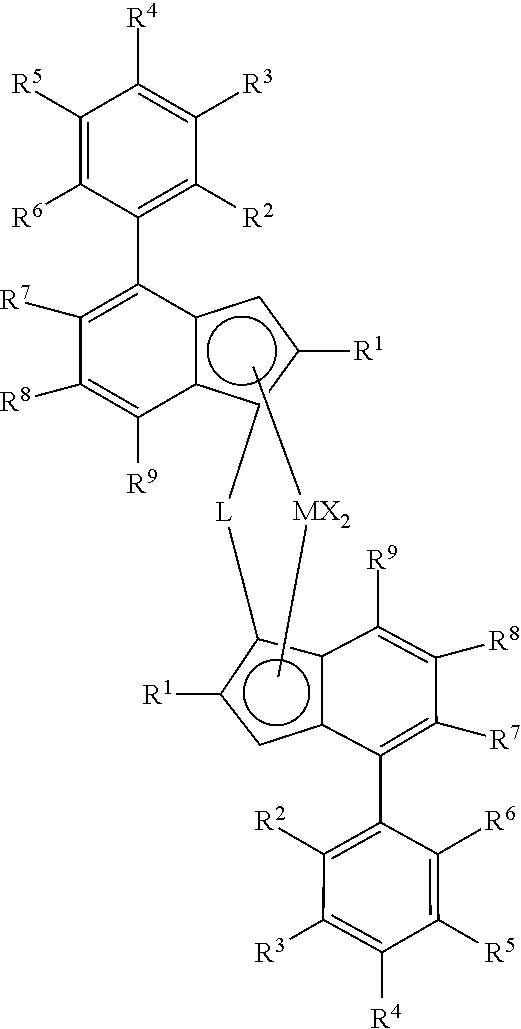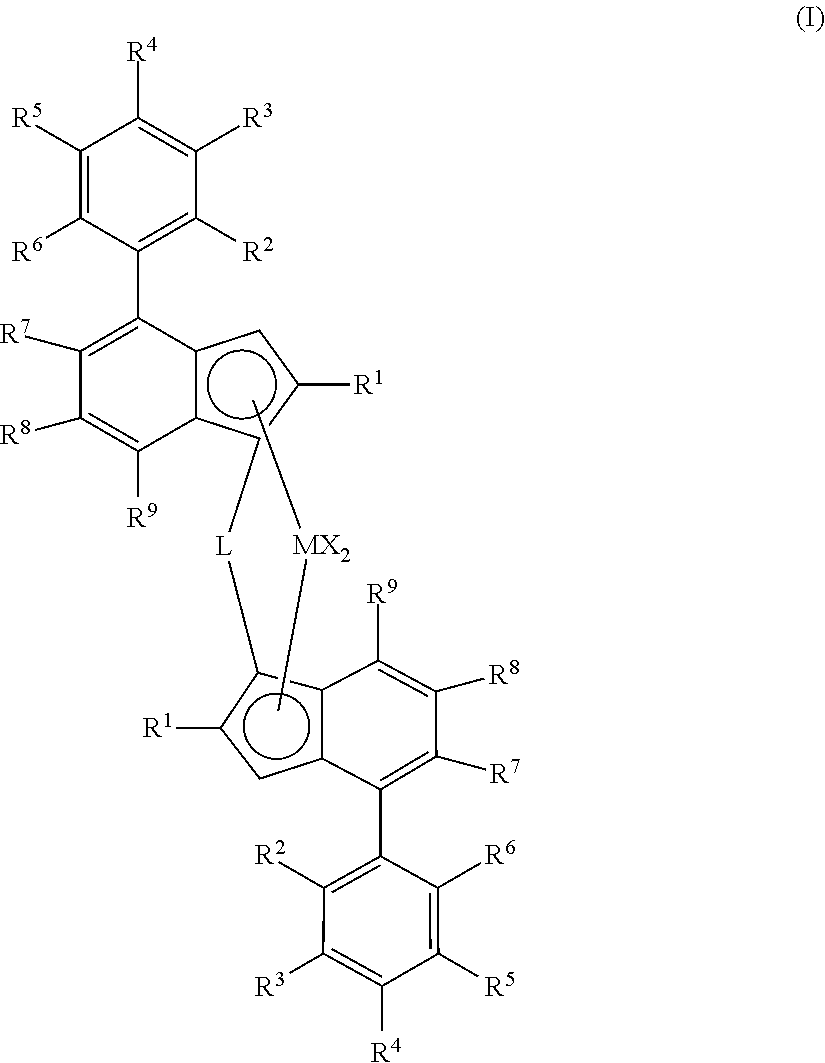Polypropylene pipe composition
a polypropylene and composition technology, applied in chemical/physical/physical-chemical stationary reactors, chemical apparatus and processes, chemical/physical/physical-chemical processes, etc., can solve the problem that site catalysts suitable for polypropylene cannot reach such low melt flow rates, and the mechanical properties cannot be met, etc. problem, to achieve the effect of good processability, good stiffness and excellent comonomer distribution
- Summary
- Abstract
- Description
- Claims
- Application Information
AI Technical Summary
Benefits of technology
Problems solved by technology
Method used
Image
Examples
examples
[0301]Examples were carried out in the pilot scale. A loop-gas phase reactor set up was used.
[0302]Polymerisation examples are shown in Table 1. Comparative examples were carried out with a Ziegler Natta catalyst, TEAL and donor D. First, 0.1 mol of MgCl2×3 EtOH was suspended under inert conditions in 250 ml of decane in a reactor at atmospheric pressure. The solution was cooled to the temperature of −15° C. and 300 ml of cold TiCl4 was added while maintaining the temperature at said level. Then, the temperature of the slurry was increased slowly to 20° C. At this temperature, 0.02 mol of dioctylphthalate (DOP) was added to the slurry. After the addition of the phthalate, the temperature was raised to 135° C. during 90 minutes and the slurry was allowed to stand for 60 minutes. Then, another 300 ml of TiCl4 was added and the temperature was kept at 135° C. for 120 minutes. After this, the catalyst was filtered from the liquid and washed six times with 300 ml heptane at 80° C. Then, ...
PUM
| Property | Measurement | Unit |
|---|---|---|
| melting temperature Tm | aaaaa | aaaaa |
| flexural modulus | aaaaa | aaaaa |
| flexural modulus | aaaaa | aaaaa |
Abstract
Description
Claims
Application Information
 Login to View More
Login to View More - R&D
- Intellectual Property
- Life Sciences
- Materials
- Tech Scout
- Unparalleled Data Quality
- Higher Quality Content
- 60% Fewer Hallucinations
Browse by: Latest US Patents, China's latest patents, Technical Efficacy Thesaurus, Application Domain, Technology Topic, Popular Technical Reports.
© 2025 PatSnap. All rights reserved.Legal|Privacy policy|Modern Slavery Act Transparency Statement|Sitemap|About US| Contact US: help@patsnap.com



